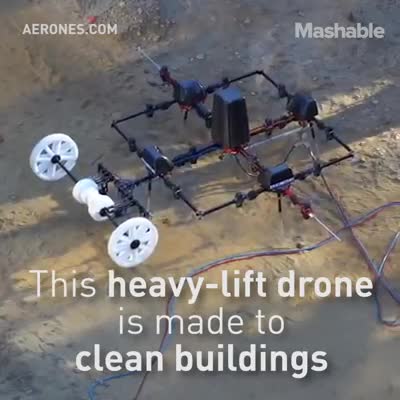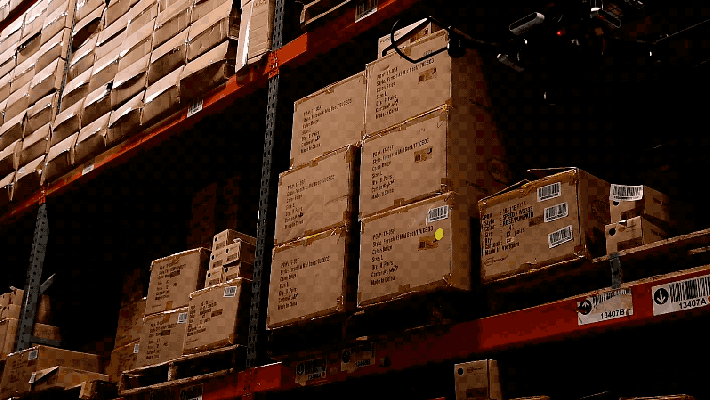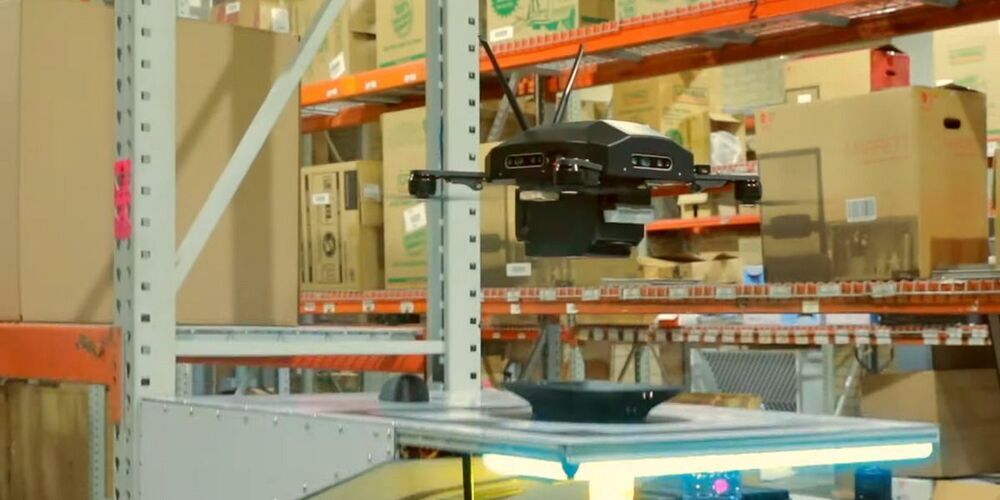In April, NASA’s ‘Ingenuity’ aircraft made history when it became the first drone to take-off, fly, and land in the atmosphere of another planet. Watch Anderson Cooper fly the terrestrial version: https://www.cbsnews.com/news/nasa-drone-mars-60-minutes-2021-08-01/
Category: drones – Page 71
New Algorithm Trains Drones To Fly Around Obstacles at High Speeds
New algorithm could enable fast, nimble drones for time-critical operations such as search and rescue.
If you follow autonomous drone racing, you likely remember the crashes as much as the wins. In drone racing, teams compete to see which vehicle is better trained to fly fastest through an obstacle course. But the faster drones fly, the more unstable they become, and at high speeds their aerodynamics can be too complicated to predict. Crashes, therefore, are a common and often spectacular occurrence.
But if they can be pushed to be faster and more nimble, drones could be put to use in time-critical operations beyond the race course, for instance to search for survivors in a natural disaster.

Wendy’s plans 700 kitchens expressly for food delivery apps
I would say this is probably aimed at a few things. It’s a work around to the national fight to raise the minimum wage. These will be out of sight out of mind, so no one, besides the workers, will see as they are gradually automated to 100% by around 2027. And, the delivery is gradually fully automated with long distance drones and self driving vehicles. Also, be sure every other chain is working on the same stuff.
The ‘ghost kitchens’ are coming to the UK, US and Canada.
System trains drones to fly around obstacles at high speeds
For drone racing enthusiasts. 😃
If you follow autonomous drone racing, you likely remember the crashes as much as the wins. In drone racing, teams compete to see which vehicle is better trained to fly fastest through an obstacle course. But the faster drones fly, the more unstable they become, and at high speeds their aerodynamics can be too complicated to predict. Crashes, therefore, are a common and often spectacular occurrence.
But if they can be pushed to be faster and more nimble, drones could be put to use in time-critical operations beyond the race course, for instance to search for survivors in a natural disaster.
Now, aerospace engineers at MIT have devised an algorithm that helps drones find the fastest route around obstacles without crashing. The new algorithm combines simulations of a drone flying through a virtual obstacle course with data from experiments of a real drone flying through the same course in a physical space.
Digest | Newest Robots and Technologies of the Future | All July Technology News in One Issue
✅ Instagram: https://www.instagram.com/pro_robots.
You’re on PRO Robotics, and in this video we present the July 2,021 news digest. New robots, drones and drones, artificial intelligence and military robots, news from Elon Musk and Boston Dynamics. All the most interesting high-tech news for July in this Issue. Be sure to watch the video to the end and write in the comments, which news you are most interested in?
0:00 Announcement of the first part of the issue.
0:23 Home robot assistants and other.
10:50 Boston Dynamics news, Tesla Model S Plaid spontaneous combustion, Elon Musk’s new rocket, Richard Brandson.
20:25 WAIC 2,021 Robotics Exhibition. New robots, drones, cities of the future.
33:10 Artificial intelligence to program robots.
#prorobots #robots #robot #future technologies #robotics.
More interesting and useful content:
✅ Elon Musk Innovation https://www.youtube.com/playlist?list=PLcyYMmVvkTuQ-8LO6CwGWbSCpWI2jJqCQ


Warehouse drones take flight
Drones are neat and fun and all that good stuff (I should probably add the caveat here that I’m obviously not referring to the big, terrible military variety), but when it comes to quadcopters, there’s always been the looming question of general usefulness. The consumer-facing variety are pretty much the exclusive realm of hobbyists and imaging.
We’ve seen a number of interesting applications for things like agricultural surveillance, real estate and the like, all of which are effectively extensions of that imaging capability. But a lot can be done with a camera and the right processing. One of the more interesting applications I’ve seen cropping up here and there is the warehouse drone — something perhaps a bit counterintuitive, as you likely (and understandably) associate drones with the outdoors.
Looking back, it seems we’ve actually had two separate warehouse drone companies compete in Disrupt Battlefield. There was IFM (Intelligent Flying Machines) in 2016 and Vtrus two years later. That’s really the tip of the iceberg for a big list of startups effectively pushing to bring drones to warehouses and factory floors.
Air Force Directed Energy Report Argues Defensive Force Fields May Be “Just On The Horizon”
The Air Force Research Laboratory at Kirtland Air Force Base has released a new analysis of the Department of Defense’s investments into directed energy technologies, or DE. The report, titled “Directed Energy Futures 2060,” makes predictions about what the state of DE weapons and applications will be 40 years from now and offers a range of scenarios in which the United States might find itself either leading the field in DE or lagging behind peer-state adversaries. In examining the current state of the art of this relatively new class of weapons, the authors claim that the world has reached a “tipping point” in which directed energy is now critical to successful military operations.
One of the document’s most eyebrow-raising predictions is that a “force field” could be created by “a sufficiently large fleet or constellation of high-altitude DEW systems” that could provide a “missile defense umbrella, as part of a layered defense system, if such concepts prove affordable and necessary.” The report cites several existing examples of what it calls “force fields,” including the Active Denial System, or “pain ray,” as well as non-kinetic counter-drone systems, and potentially counter-missile systems, that use high-power microwaves to disable or destroy their targets. Most intriguingly, the press release claims that “the concept of a DE weapon creating a localized force field may be just on the horizon.”
Kratos Says Secret “Off-Board Sensing Station” Unmanned Aircraft Will Be Transformative
The U.S. Air Force is looking to field a new type of low-cost yet advanced drone to be used as an “Off-Board Sensing Station,” or OBSS. Details remain very limited, and the few publicly available Air Force Research Laboratory documents on the program state that specifics are only available to approved contractors. Still, according to Kratos, one of the companies involved with the effort, the new unmanned platform could potentially end up being as revolutionary as the firm’s stealthy XQ-58 Valkyrie has been.
The remarks about the OBSS program were made by Eric DeMarco, President and Chief Executive Officer of Kratos Defense & Security Solutions, during a company earnings call this week. DeMarco says that if the program is successful, the company believes it “could ultimately be as significant and transformational to Kratos as we expect Valkyrie to be.” The CEO added that the OBSS program is a signal that “the total addressable market opportunity for Kratos’ class of tactical drones is rapidly expanding and clarifying, as the Department of Defense strives for affordable force multiplier systems and technologies.”
